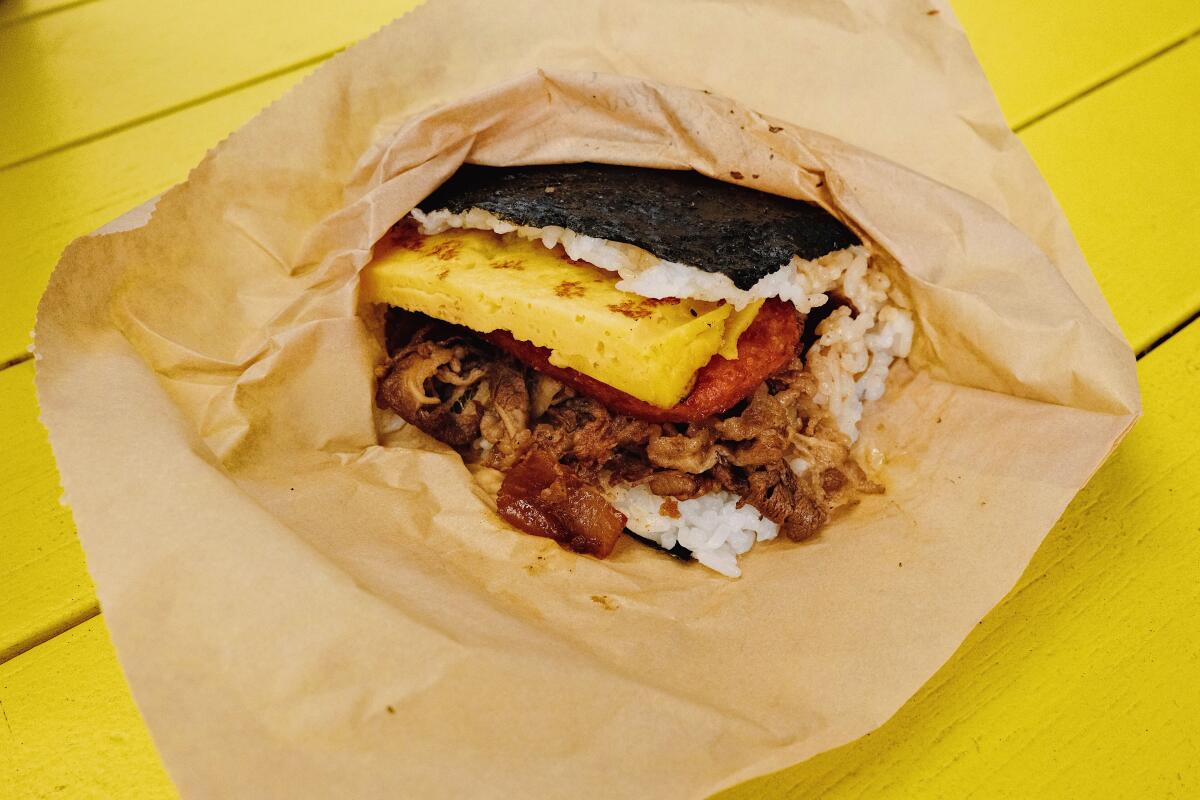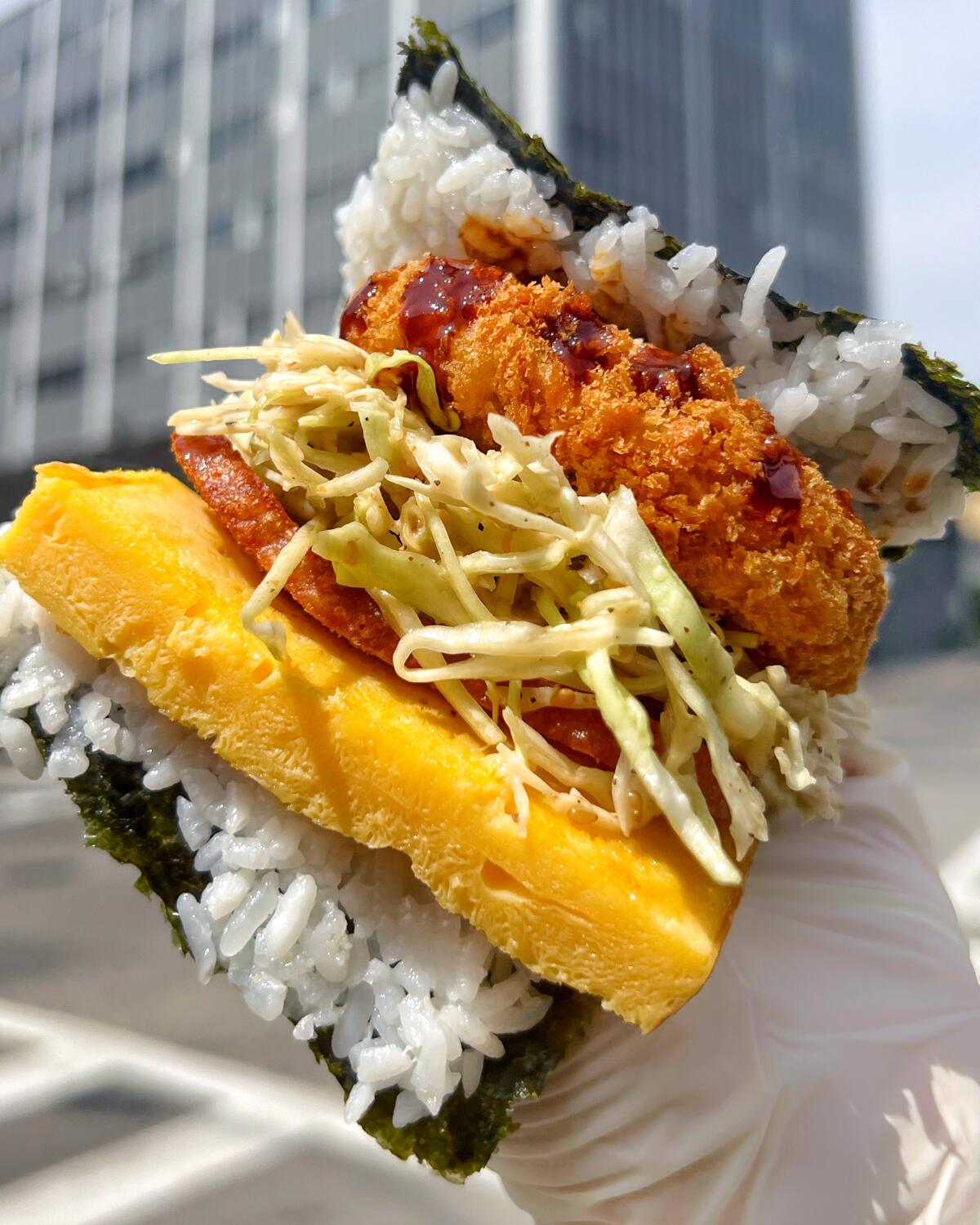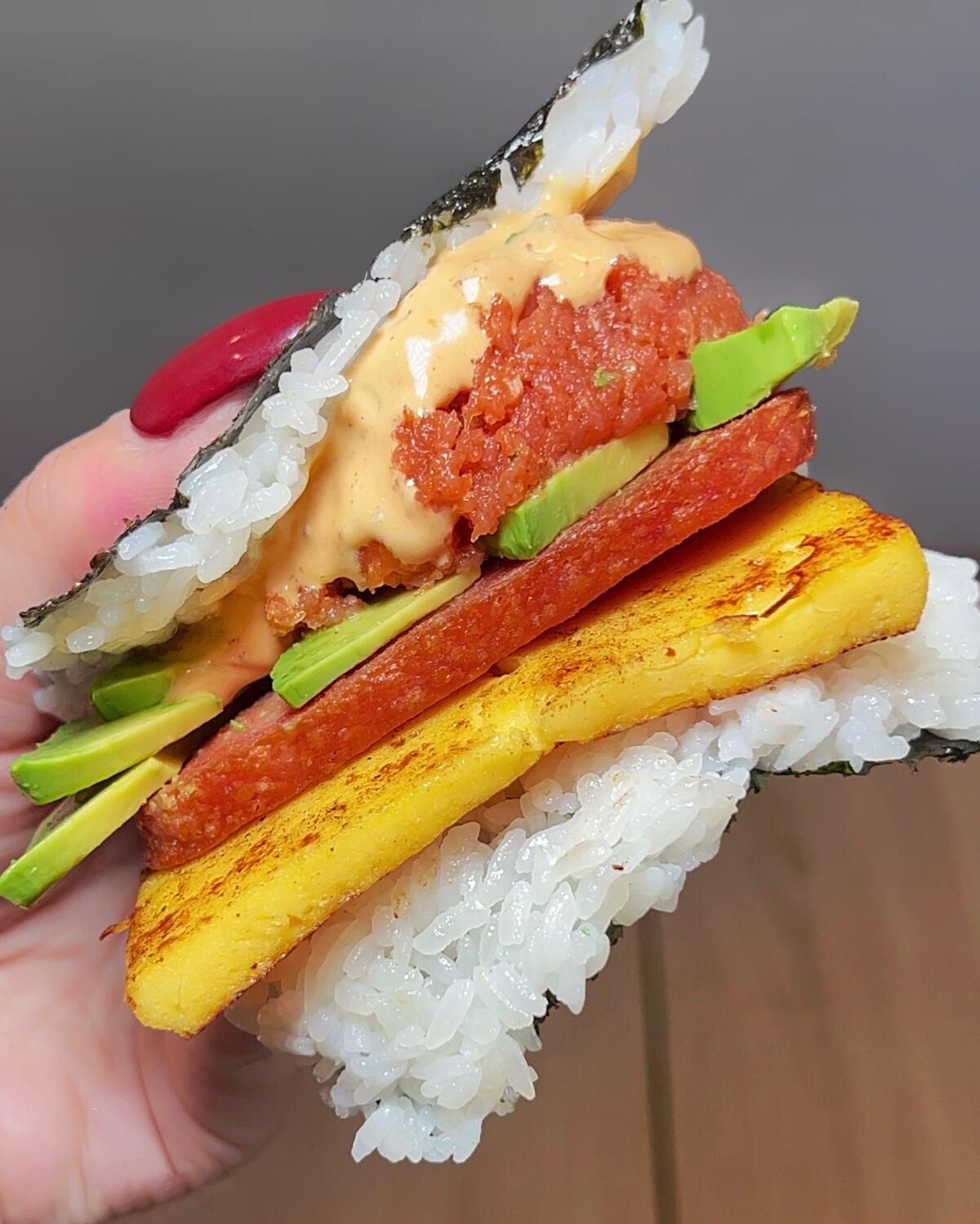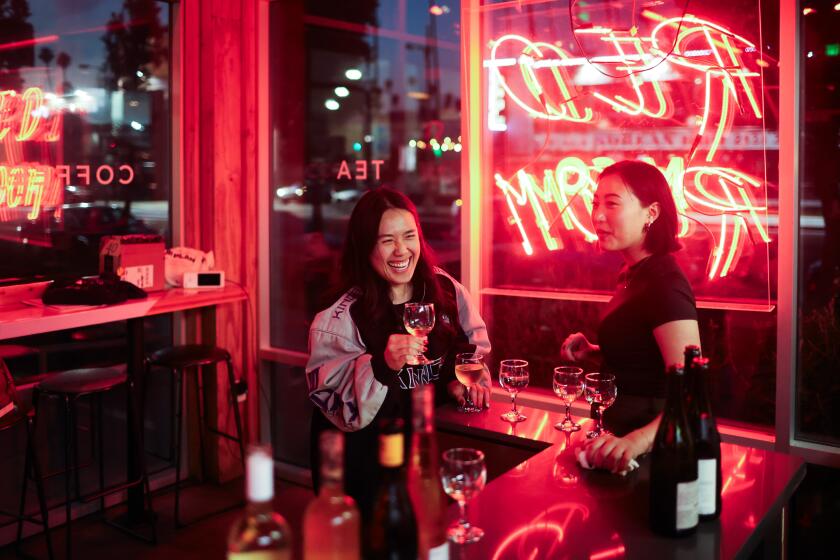Stuck in L.A. traffic? Stop here to eat

I can’t stop eating in Koreatown. As my fingers fly across the keyboard, I anticipate the angry emails from readers in the various valleys (I hear you, San Fernando Valley) and beyond. I promise there will be more columns devoted to wherever you live, soon. But if you’re like me, and use 6th Street or Olympic Boulevard as the main arteries between east and west Los Angeles, you spend a lot of time in Koreatown.
And with an almost constant influx of new restaurants, tea and dessert shops, I have always found the culinary and cultural wonderland irresistible.
During one of my recent treks across the city, I noticed Supamu, the restaurant that replaced spicy fried chicken specialist Michin Dak on the corner of 6th and South Catalina streets. It’s more of a stand than an actual restaurant, and it serves about 20 iterations of what it calls Okinawan-style onigiri.
Embrace the extremes of Koreatown with barbecue, speakeasies, karaoke and more. Explore a tri-level mecca for Korean culture in Buena Park and a modern Korean wave of fine dining in New York.
Choose your own Spam adventure at Supamu
“We wanted to do something quirky and fun with Spam,” owner Young Kim said on a recent call. “Our main ingredients are Spam and tamago.”
The onigiri is presented as a sort of stacked sandwich versus the more traditional ball of rice that envelops a filling. They’re similar to onigirazu, the plastic-wrapped sushi sandwiches that originated in the “Cooking Papa” manga series in the 1990s. And with the inclusion of Spam, they’re more reminiscent of Spam musubi, the popular Hawaiian food that consists of Spam and rice with a band of toasted seaweed.
Each Supamu onigiri includes two layers of nori-wrapped sushi rice, a pan-fried or deep-fried slice of Spam, a square of the Japanese sweet omelet and about two dozen other possible fillings.
Kim isn’t a chef, but he’s worked in the Japanese restaurant industry in Los Angeles for the last 20 years, mostly handling real estate and investments. He left the corporate side a few years ago to open Ramen Kenjo at the USC Village and Bopjo KBBQ in San Diego.

When a friend returned from a trip to Okinawa with pictures and stories of the Okinawan rice sandwiches, Kim was determined to re-create them in Los Angeles.
“When people ask if I’m a chef, I tell them I’m a businessman that has to cook,” he said. “I’m not a trained chef. I like to have fun and do things outside the box, nothing ordinary.”
He started Supamu out of a ghost kitchen in 2020, transitioned to a food truck and opened the Koreatown brick-and-mortar location in March. With a small walk-up window and a few high-top tables with stools, it is an unlikely place for glorification.
The picture menu near the ordering window is expansive, with onigiri stuffed with whole soft-shell crabs, balls of takoyaki and kimchi. If you arrive too late in the day, bands of black tape will cover the pictures of sold-out onigiri.
One is a snack. Two is a meal. After three, you’ll probably need to lie down.
Red Room in Koreatown is a restaurant at a coffee shop with natural wine and Korean food from a medical doctor.
The spicy tuna is like your favorite hand roll and musubi smashed into one. The ground tuna is seasoned with sesame oil and enough Sriracha to elicit a slight sting. Kim layers it on top of the Spam and tamago with a squirt of spicy mayonnaise and a sprinkle of furikake. Spicy tuna between Spam and egg may be a hard sell, but the spice, freshness and temperature of the tuna lighten the sandwich, fooling you into thinking you have enough room to eat more than you previously thought possible.
The most luxurious of the onigiri may be the one filled with a whole soft-shell crab, its claws protruding at every angle. Kim submerges the crabs in a potato starch batter, deep-fries them, then dresses the crabs in a soy garlic sauce. They’re nestled in between the top layer of rice and Spam, providing a layer of marine-infused crunch.

If I had to choose a favorite, the one I’d order two of so that I could eat one on the spot and the other 30 minutes later in the car, is the curry croquette. Depending on when you visit and whether Kim is experiencing supply chain issues at the time, the croquette in the middle of your onigiri may be pumpkin, pumpkin and potato, potato or corn. Whatever the starch, it’s seasoned with a mild and sweet Japanese curry and made into a fritter. I could have feasted on a basket full of my recent pumpkin and potato fritters alone.
The onigiri is assembled with the croquette and a heap of sesame cabbage coleslaw and your choice of tonkatsu or tartar sauce.
Kim said the onigiri are by design, endlessly customizable. If you don’t eat pork, there’s turkey Spam. If you like your Spam sweet, order the maple Spam. Enjoy the edges of your Spam extra crispy? Ask to have it deep-fried. If you’re on a plant-based diet or don’t like Spam, you can replace it with miso-marinated tofu. Hate seaweed? He’ll wrap your rice in soy paper instead.
Kim said he plans to add even more onigiri to the menu, and extend the hours on the weekends.
I’ll take my Spam deep-fried and topped with whatever combination Kim dreams up next.
Where to eat when you're stuck in Koreatown traffic
Supamu, 3324 W. 6th St., Los Angeles, instagram.com/livesupamulife
More to Read
Eat your way across L.A.
Get our weekly Tasting Notes newsletter for reviews, news and more.
You may occasionally receive promotional content from the Los Angeles Times.













